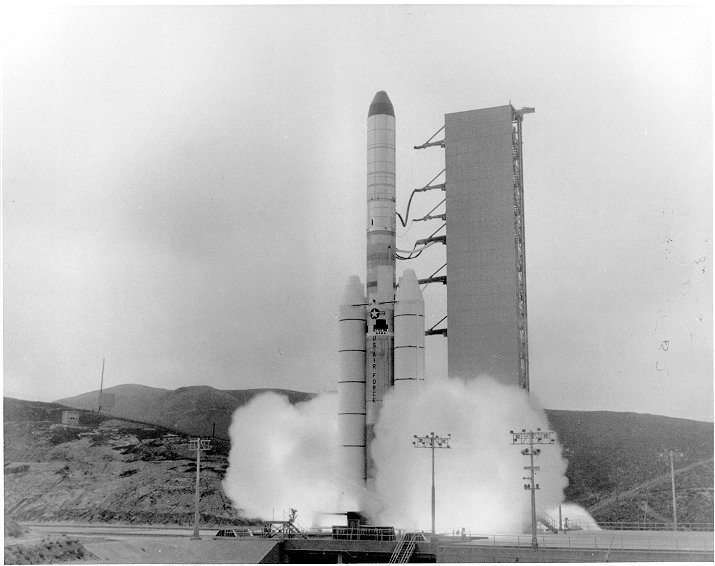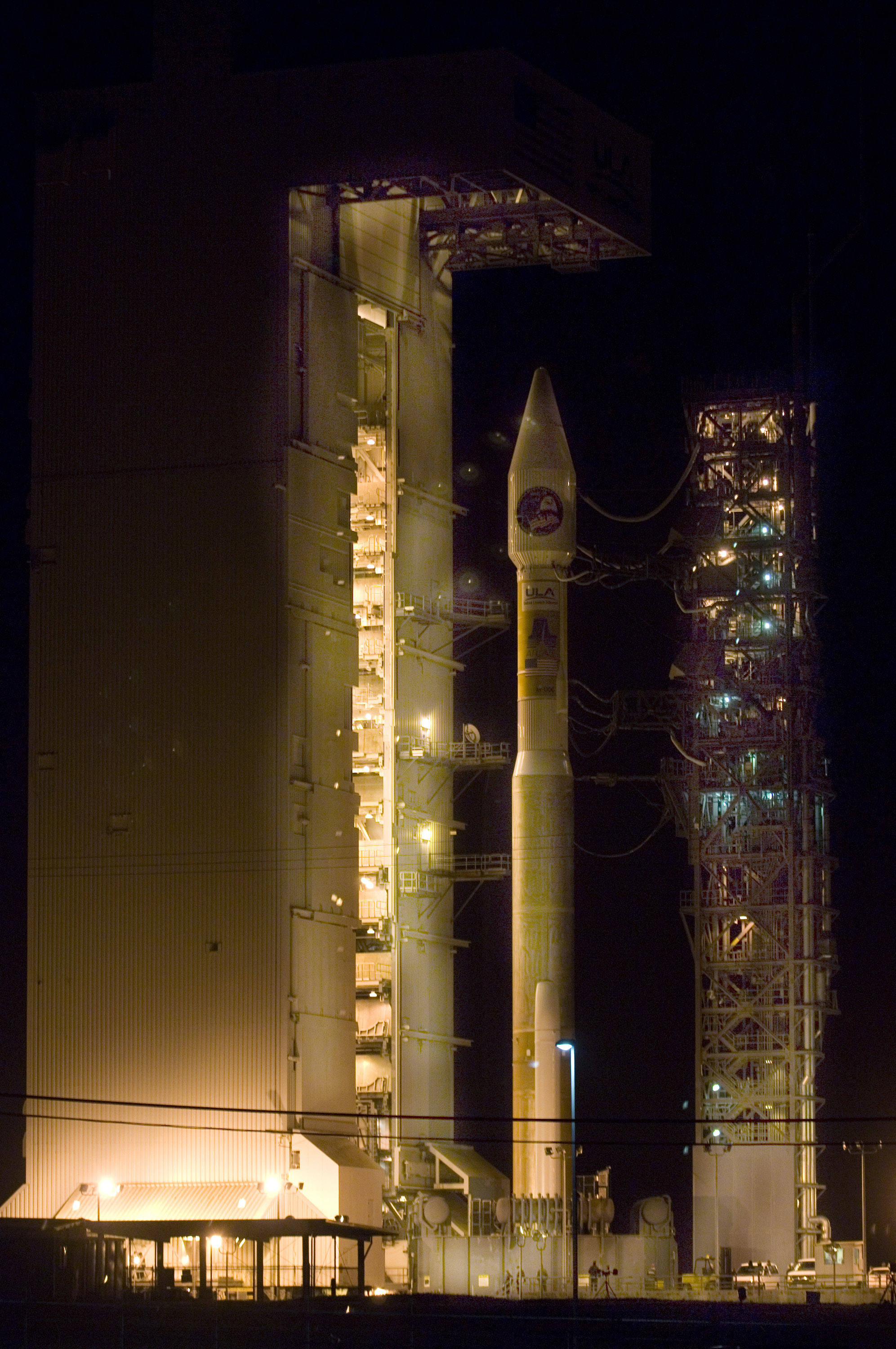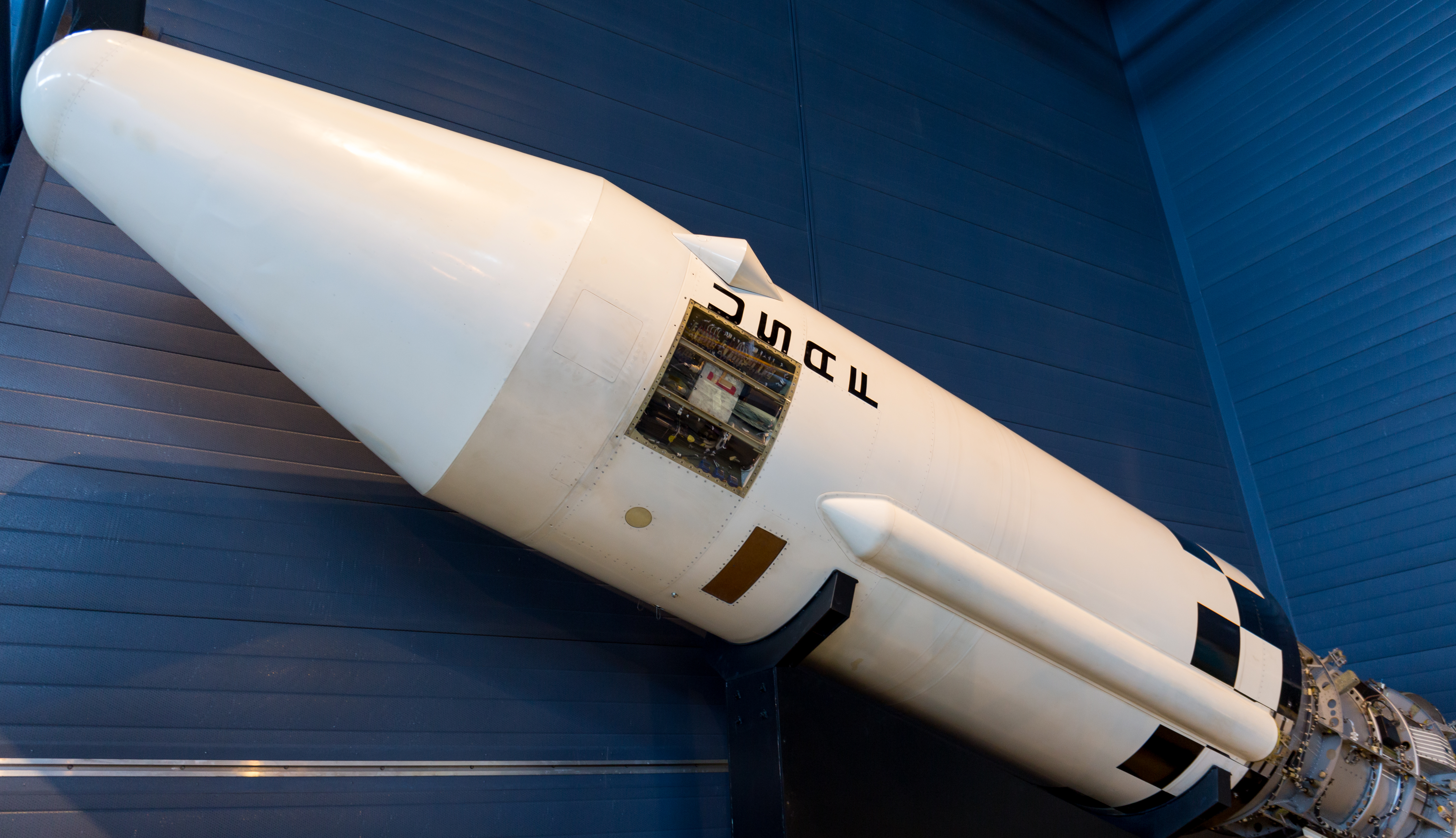|
Atlas-Agena
The Atlas-Agena was an American expendable launch system derived from the SM-65 Atlas missile. It was a member of the Atlas family of rockets, and was launched 109 times between 1960 and 1978. It was used to launch the first five Mariner uncrewed probes to the planets Venus and Mars, and the Ranger and Lunar Orbiter uncrewed probes to the Moon. The upper stage was also used as an uncrewed orbital target vehicle for the Gemini crewed spacecraft to practice rendezvous and docking. However, the launch vehicle family was originally developed for the Air Force and most of its launches were classified DoD payloads. The Atlas-Agena was a two-and-a-half-stage rocket, with a stage-and-a-half Atlas missile as the first stage, and an RM-81 Agena second stage. Initially, Atlas D missiles, redesignated as the LV-3, were used as the first stage. These were later replaced by the standardized Atlas SLV-3, and its derivatives, the SLV-3A and B. The final Atlas-Agena launch used an At ... [...More Info...] [...Related Items...] OR: [Wikipedia] [Google] [Baidu] |
Vandenberg AFB Space Launch Complex 4
Space Launch Complex 4 (SLC-4) is a launch and landing site at Vandenberg Space Force Base, California, U.S. It has two pads, both of which are used by SpaceX for Falcon 9, one for launch operations, and other as Landing Zone 4 (LZ-4) for SpaceX landings. The complex was previously used by Atlas and Titan rockets between 1963 and 2005. It consisted of two launch pads, SLC-4W and SLC-4E, which were formerly designated PALC-2-3 and PALC-2-4 respectively. Both pads were built for use by Atlas-Agena rockets, but were later rebuilt to handle Titan rockets. The designation SLC-4 was applied at the time of the conversion to launch Titan launch vehicles. Both pads at Space Launch Complex 4 are currently leased by SpaceX. SLC-4E is leased as a launch site for the Falcon 9 rocket, which first flew from Vandenberg on 29 September 2013, following a 24-month refurbishment program which had started in early 2011. SpaceX began a five-year lease of Launch Complex 4 West in February 2015 in ... [...More Info...] [...Related Items...] OR: [Wikipedia] [Google] [Baidu] |
Vandenberg AFB Space Launch Complex 3
Space Launch Complex 3 (SLC-3) is a launch site at Vandenberg Space Force Base that consists of two separate launch pads. SLC-3E (East) is currently used by the Atlas V launch vehicle, while SLC-3W (West) has been demolished. Launches from Vandenberg fly southward, allowing payloads to be placed in high-inclination orbits such as polar or Sun-synchronous orbit, which allow full global coverage on a regular basis and are often used for weather, Earth observation, and reconnaissance satellites. These orbits are difficult to reach from Cape Canaveral Space Force Station, where launches must fly eastward due to major population centers to both the north and south of Kennedy Space Center. Avoiding these would require hugely inefficient maneuvering, greatly reducing payload capacity. SLC-3E was the launch site of the Mars lander ''InSight'' in May 2018. SLC-3E History One of two Atlas-Agena pads at VAFB, SLC-3E was originally the designated facility for MIDAS (Missile Defense Alarm ... [...More Info...] [...Related Items...] OR: [Wikipedia] [Google] [Baidu] |
Mariner Program
The Mariner program was conducted by the American space agency NASA to explore other planets. Between 1962 and late 1973, NASA's Jet Propulsion Laboratory (JPL) designed and built 10 robotic interplanetary probes named Mariner to explore the inner Solar System - visiting the planets Venus, Mars and Mercury for the first time, and returning to Venus and Mars for additional close observations. The program included a number of interplanetary firsts, including the first planetary flyby, the planetary orbiter, and the first gravity assist maneuver. Of the 10 vehicles in the Mariner series, seven were successful, forming the starting point for many subsequent NASA/JPL space probe programs. The planned Mariner Jupiter-Saturn vehicles were adapted into the Voyager program, while the Viking program orbiters were enlarged versions of the Mariner 9 spacecraft. Later Mariner-based spacecraft include Galileo and Magellan, while the second-generation Mariner Mark II series evolved into th ... [...More Info...] [...Related Items...] OR: [Wikipedia] [Google] [Baidu] |
Cape Canaveral Air Force Station Launch Complex 12
Launch Complex 12 (LC-12) at Cape Canaveral Space Force Station, Florida was a launch pad used by Atlas rockets and missiles between 1958 and 1967. It was the second-most southern of the pads known as Missile Row, between LC-11 to the south and LC-13 to the north. Along with Complexes 11, 13 and 14, 12 featured a more robust design than many contemporary pads, due to the greater power of the Atlas compared to other rockets of the time. It was larger, and featured a concrete launch pedestal that was tall and a reinforced blockhouse. The rockets were delivered to the launch pad by means of a ramp on the southwest side of the launch pedestal. Atlas A, C and D missiles were tested from the site. It was also used for orbital launches of Atlas-Able and later Atlas-Agena rockets, and two Project FIRE suborbital tests for Project Apollo, using Atlas D rockets. LC-12's first launch was Atlas 10A on January 10, 1958. During the second half of the year, a larger umbilical service ... [...More Info...] [...Related Items...] OR: [Wikipedia] [Google] [Baidu] |
Atlas (rocket Family)
Atlas is a family of US missiles and space launch vehicles that originated with the SM-65 Atlas. The Atlas intercontinental ballistic missile (ICBM) program was initiated in the late 1950s under the Convair Division of General Dynamics. Atlas was a liquid propellant rocket burning RP-1 fuel with liquid oxygen in three engines configured in an unusual "stage-and-a-half" or "parallel staging" design: two outboard booster engines were jettisoned along with supporting structures during ascent, while the center sustainer engine, propellant tanks and other structural elements remained connected through propellant depletion and engine shutdown. The Atlas name was originally proposed by Karel Bossart and his design team working at Convair on project MX-1593. Using the name of a mighty titan from Greek mythology reflected the missile's place as the biggest and most powerful at the time. It also reflected the parent company of Convair, the Atlas Corporation. The missiles saw only ... [...More Info...] [...Related Items...] OR: [Wikipedia] [Google] [Baidu] |
Cape Canaveral Air Force Station Launch Complex 13
Launch Complex 13 (LC-13) was a launch complex at Cape Canaveral Space Force Station, the third-most southerly of the original launch complexes known as Missile Row, lying between LC-12 and LC-14. In 2015, the LC-13 site was leased by SpaceX and was renovated for use as Landing Zone 1 and Landing Zone 2, the company's East Coast landing location for returning Falcon 9 and Falcon Heavy launch vehicle booster stages. LC-13 was originally used for test launches of the SM-65 Atlas and subsequently for operational Atlas launches from 1958 to 1978. It was the most-used and longest-serving of the original four Atlas pads.The original four Atlas pads were LC-11, 12, 13 and 14. It was inactive between 1980 and 2015. On 16 April 1984, it was added to the US National Register of Historic Places; however it was not maintained and gradually deteriorated. On 6 August 2005 the mobile service tower was demolished as a safety precaution due to structural damage by corrosion.The structure ... [...More Info...] [...Related Items...] OR: [Wikipedia] [Google] [Baidu] |
Cape Canaveral Air Force Station
Cape Canaveral Space Force Station (CCSFS) is an installation of the United States Space Force's Space Launch Delta 45, located on Cape Canaveral in Brevard County, Florida. Headquartered at the nearby Patrick Space Force Base, the station is the primary launch site for the Space Force's Eastern RangeCAST 1999, p. 1-12. with three launch pads currently active (Space Launch Complexes 37B, 40, and 41). The facility is south-southeast of NASA's Kennedy Space Center on adjacent Merritt Island, with the two linked by bridges and causeways. The Cape Canaveral Space Force Station Skid Strip provides a runway close to the launch complexes for military airlift aircraft delivering heavy and outsized payloads to the Cape. A number of American space exploration pioneers were launched from CCSFS, including the first U.S. Earth satellite (1958), first U.S. astronaut (1961), first U.S. astronaut in orbit (1962), first two-man U.S. spacecraft (1965), first U.S. unmanned lunar ... [...More Info...] [...Related Items...] OR: [Wikipedia] [Google] [Baidu] |
RM-81 Agena
The RM-81 Agena was an American rocket upper stage and satellite bus which was developed by Lockheed Corporation initially for the canceled WS-117L reconnaissance satellite program. Following the split-up of WS-117L into SAMOS and Corona for image intelligence, and MIDAS for early warning, the Agena was later used as an upper stage, and an integrated component, for several programs, including Corona reconnaissance satellites and the Agena Target Vehicle used to demonstrate rendezvous and docking during Project Gemini. It was used as an upper stage on the Atlas, Thor, Thorad and Titan IIIB rockets, and considered for others including the Space Shuttle and Atlas V. A total of 365 Agena rockets were launched between February 28, 1959 and February 1987. Only 33 Agenas carried NASA payloads and the vast majority were for DoD programs. On some missions, the payload was built directly into the Agena, which provided it with electric power, communications and three-axis stabilization. ... [...More Info...] [...Related Items...] OR: [Wikipedia] [Google] [Baidu] |
XLR81
The Bell Aerosystems Company XLR81 (Model 8096) was an American liquid-propellant rocket engine, which was used on the Agena upper stage. It burned UDMH and RFNA fed by a turbopump in a fuel rich gas generator cycle. The turbopump had a single turbine with a gearbox to transmit power to the oxidizer and fuel pumps. The thrust chamber was all-aluminum, and regeneratively cooled by oxidizer flowing through gun-drilled passages in the combustion chamber and throat walls. The nozzle was a titanium radiatively cooled extension. The engine was mounted on a hydraulic actuated gimbal which enabled thrust vectoring to control pitch and yaw. Engine thrust and mixture ratio were controlled by cavitating flow venturis on the gas generator flow circuit. Engine start was achieved by solid propellant start cartridge. Variants Starting as an air-launched missile engine and finishing as a multi-mission general propulsion for the space age, the basic design went through a series of iter ... [...More Info...] [...Related Items...] OR: [Wikipedia] [Google] [Baidu] |
Cape Canaveral Air Force Station Launch Complex 14
Launch Complex 14 (LC-14) is a launch site at Cape Canaveral Space Force Station in Florida. LC-14 was used for various manned and unmanned Atlas launches, including the February 1962, '' Friendship 7'' flight aboard which John Glenn became the first American to orbit the Earth. History LC-14 was the first Atlas pad in operation and hosted the test flights in 1957–58. It was also the only one of the original four pads to never have a booster explode on it. By 1959, it was decided to convert the pad for the Atlas D missile and space launches, and a large service tower was added early in the year. The first Atlas flown from the renovated LC-14 was Missile 7D on May 18; however, a problem with the launcher hold-down arms damaged the missile and caused its explosion shortly after launch. This was traced to improper procedures during the renovation of the pad and was quickly fixed. The first space launch off of LC-14 was the Big Joe Mercury test in September. As the designated Me ... [...More Info...] [...Related Items...] OR: [Wikipedia] [Google] [Baidu] |
Convair
Convair, previously Consolidated Vultee, was an American aircraft manufacturing company that later expanded into rockets and spacecraft. The company was formed in 1943 by the merger of Consolidated Aircraft and Vultee Aircraft. In 1953, it was purchased by General Dynamics, and operated as their Convair Division for most of its corporate history. Convair is best known for its military aircraft; it produced aircraft such as the Convair B-36 Peacemaker and Convair B-58 Hustler strategic bombers, and the Convair F-102 Delta Dagger and Convair F-106 Delta Dart interceptors. It also manufactured the first Atlas rockets, including the rockets that were used for the crewed orbital flights of Project Mercury. The company's subsequent Atlas-Centaur design continued this success and derivatives of the design remain in use as of 2020. The company also entered the jet airliner business with its Convair 880 and Convair 990 designs. These were smaller than contemporary aircraft like ... [...More Info...] [...Related Items...] OR: [Wikipedia] [Google] [Baidu] |
Project Gemini
Project Gemini () was NASA's second human spaceflight program. Conducted between projects Mercury and Apollo, Gemini started in 1961 and concluded in 1966. The Gemini spacecraft carried a two-astronaut crew. Ten Gemini crews and 16 individual astronauts flew low Earth orbit (LEO) missions during 1965 and 1966. Gemini's objective was the development of space travel techniques to support the Apollo mission to land astronauts on the Moon. In doing so, it allowed the United States to catch up and overcome the lead in human spaceflight capability the Soviet Union had obtained in the early years of the Space Race, by demonstrating: mission endurance up to just under 14 days, longer than the eight days required for a round trip to the Moon; methods of performing extra-vehicular activity (EVA) without tiring; and the orbital maneuvers necessary to achieve rendezvous and docking with another spacecraft. This left Apollo free to pursue its prime mission without spending time devel ... [...More Info...] [...Related Items...] OR: [Wikipedia] [Google] [Baidu] |




.jpg)




